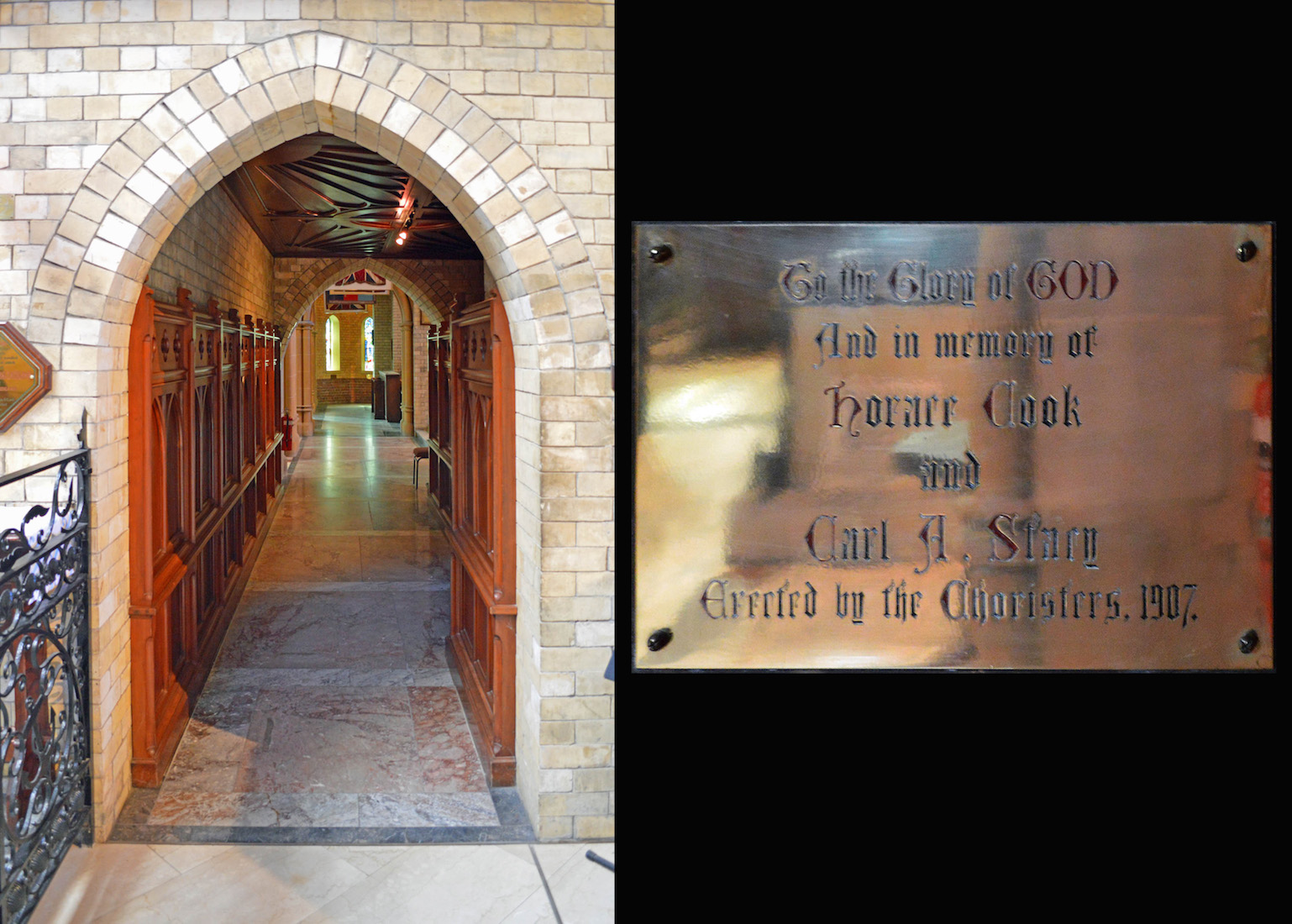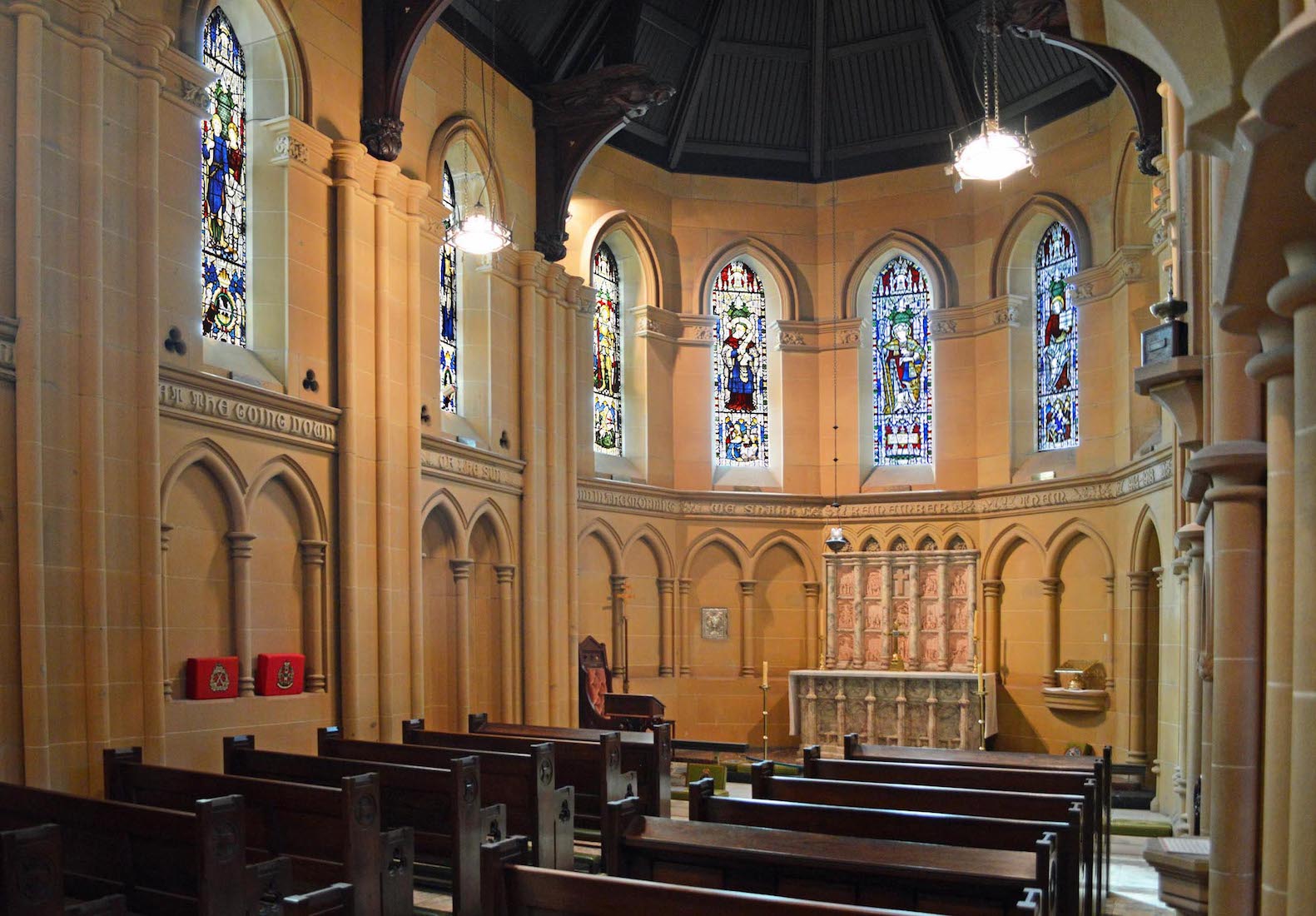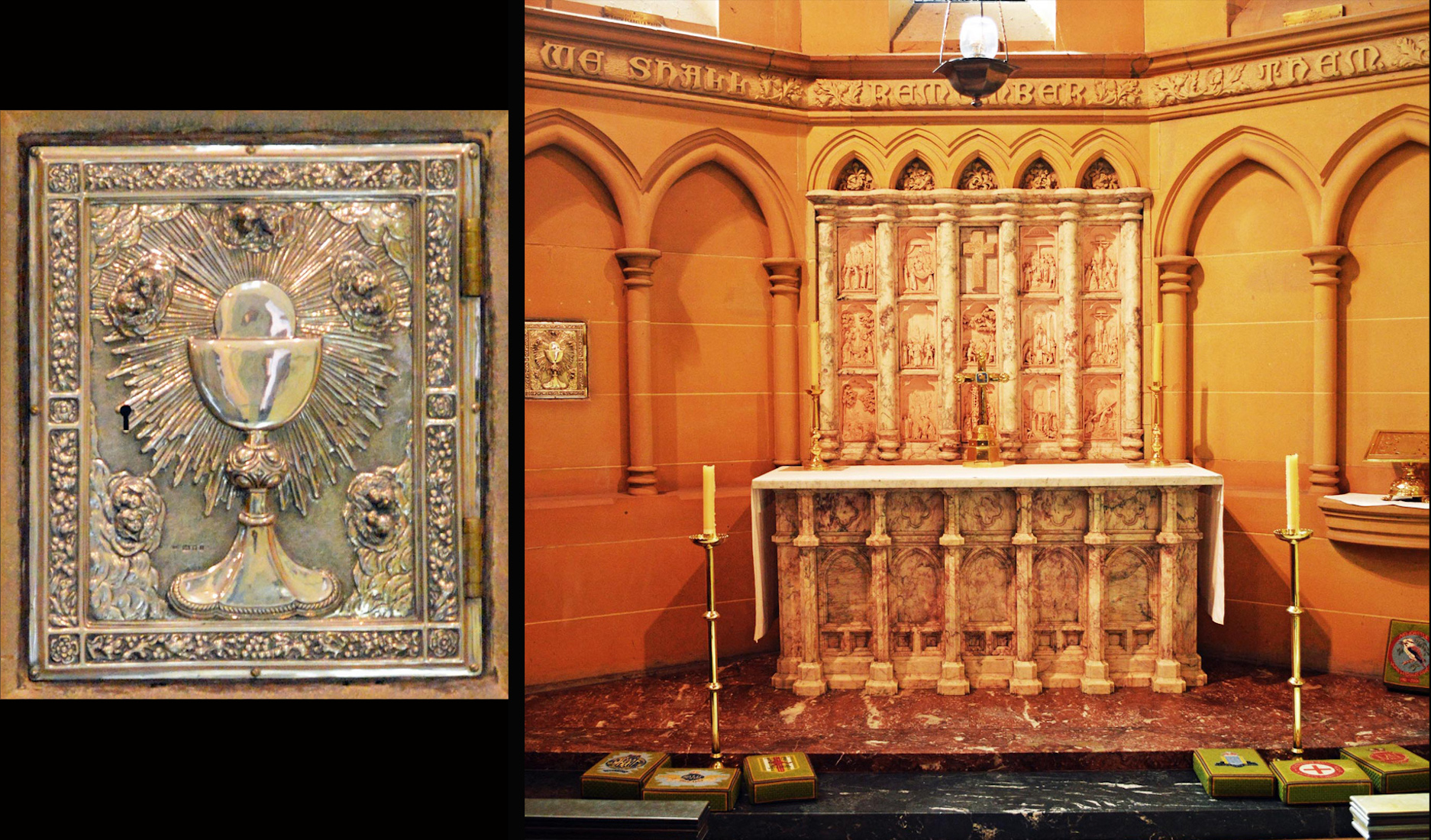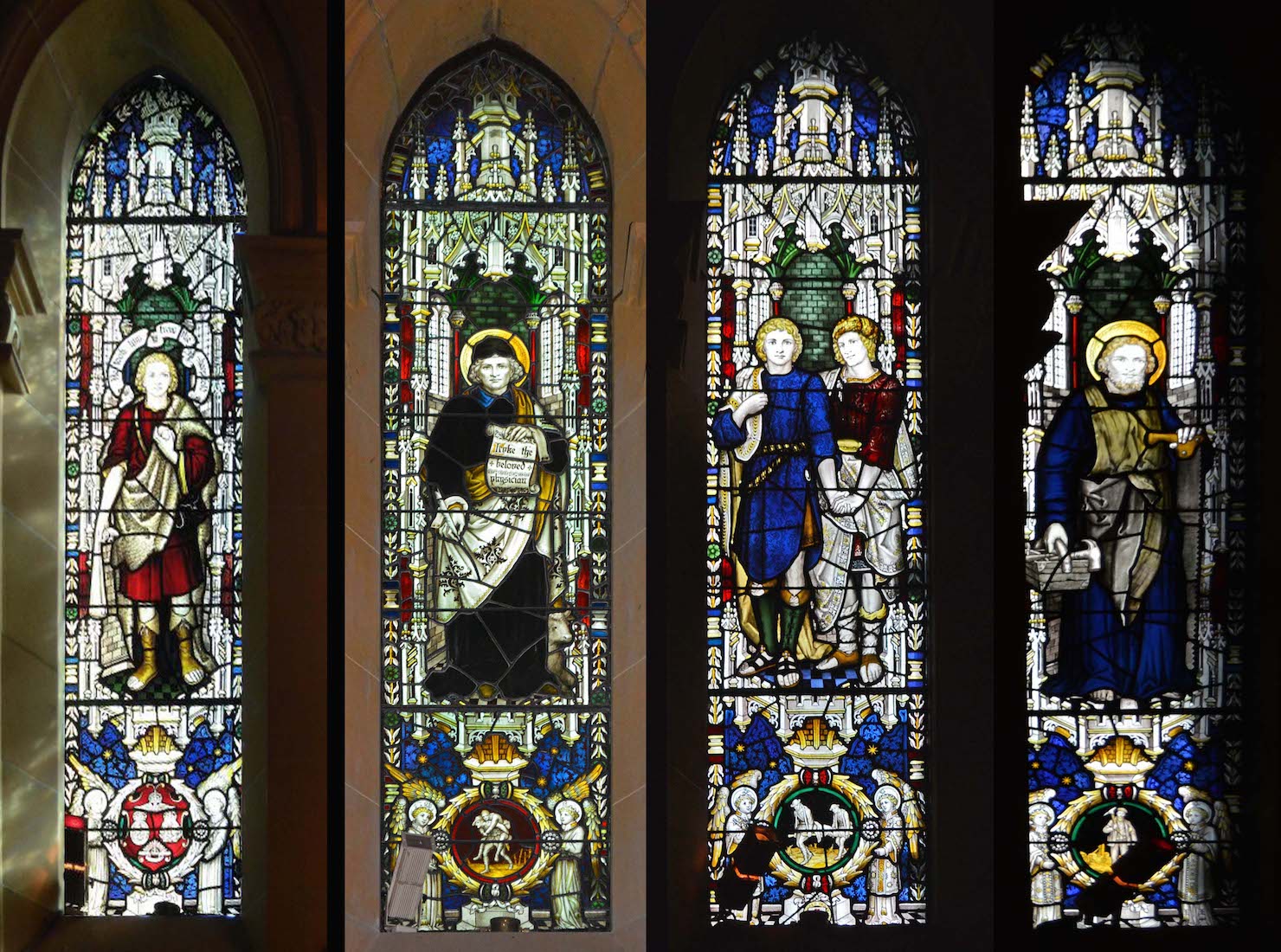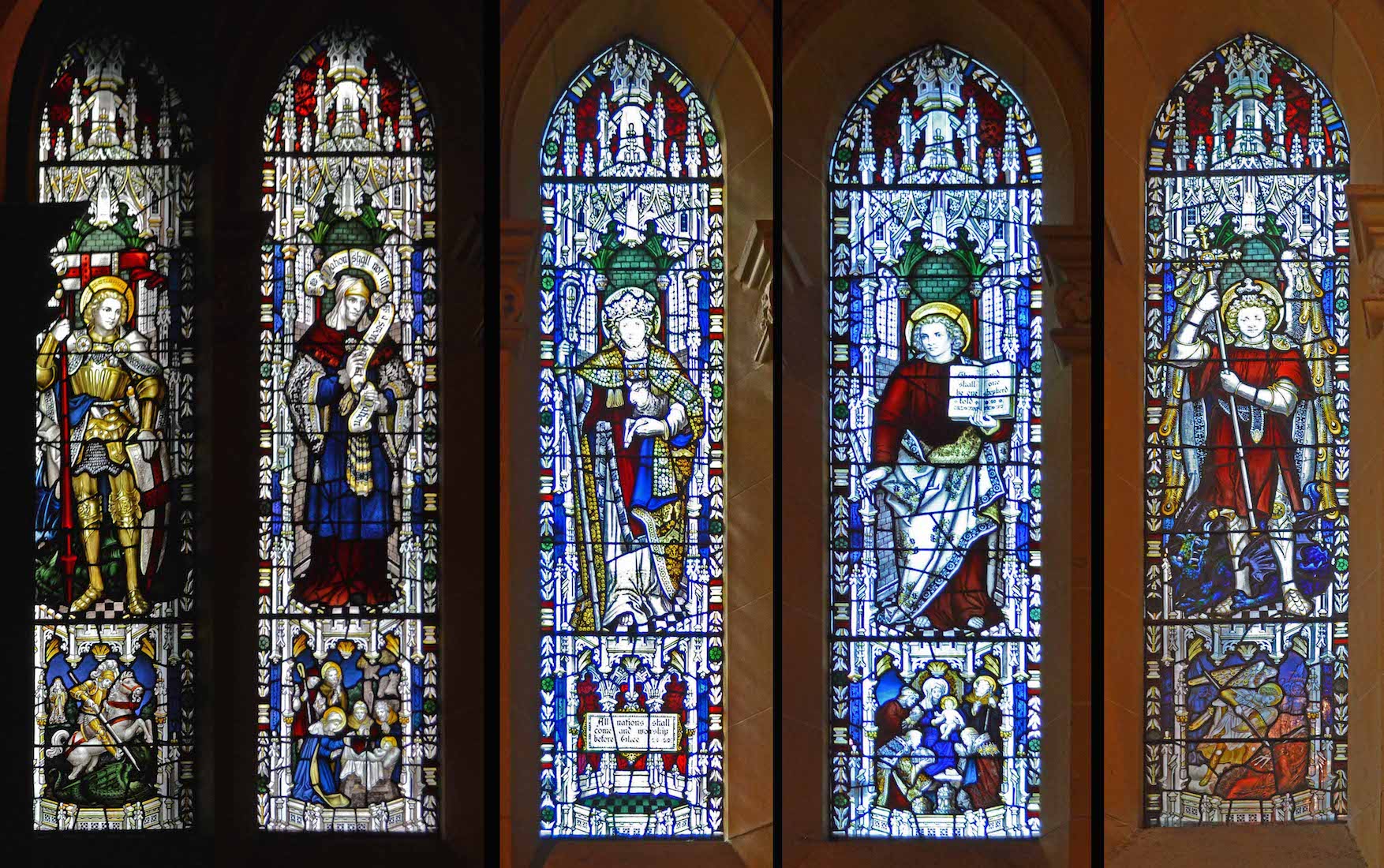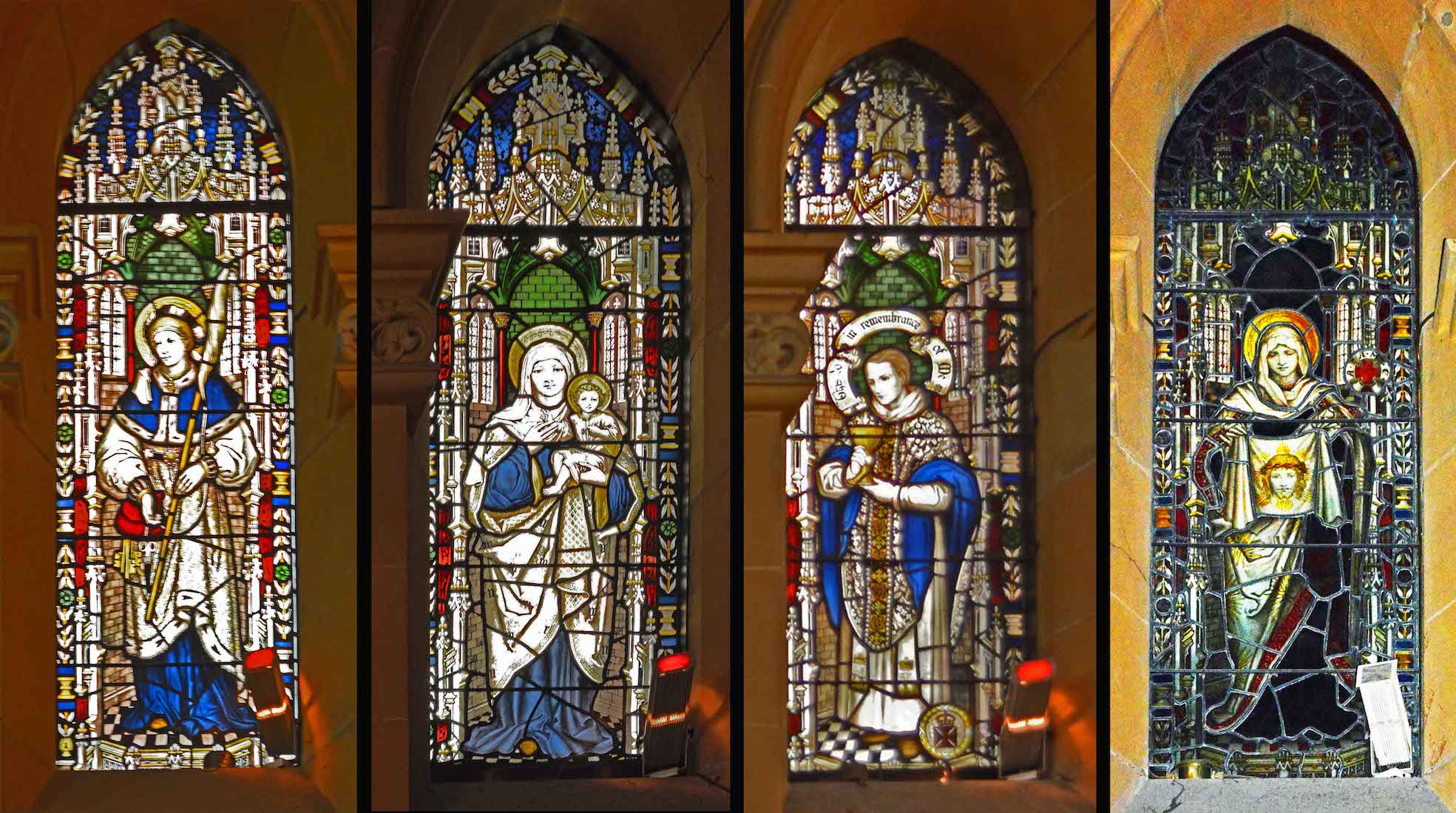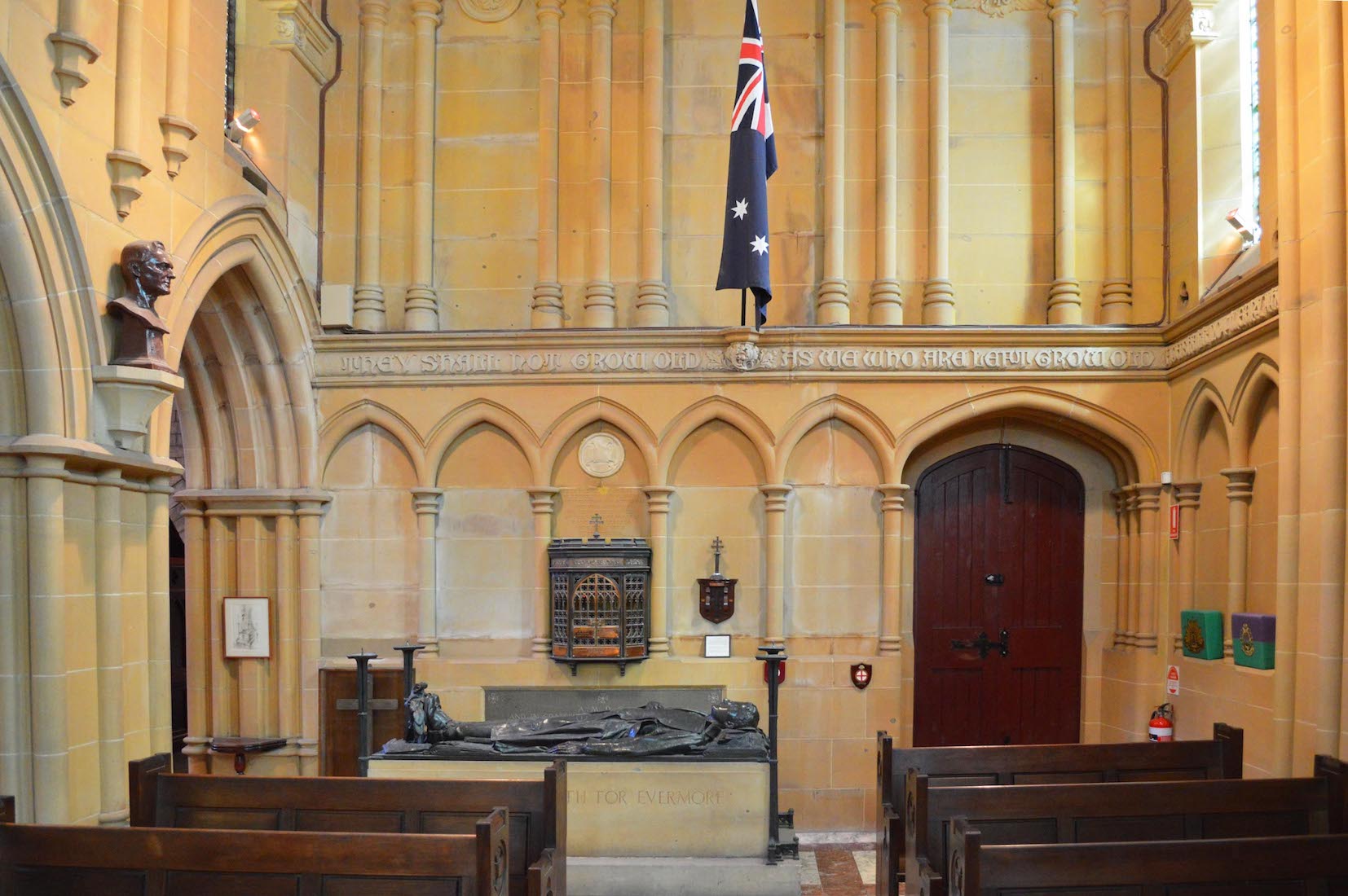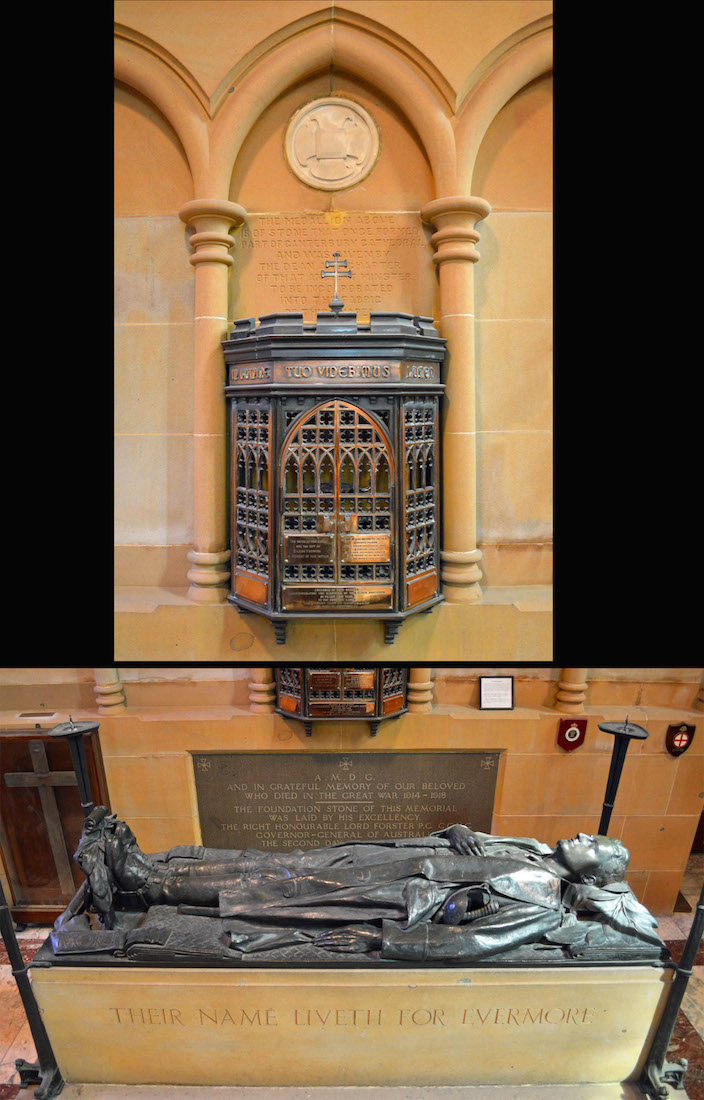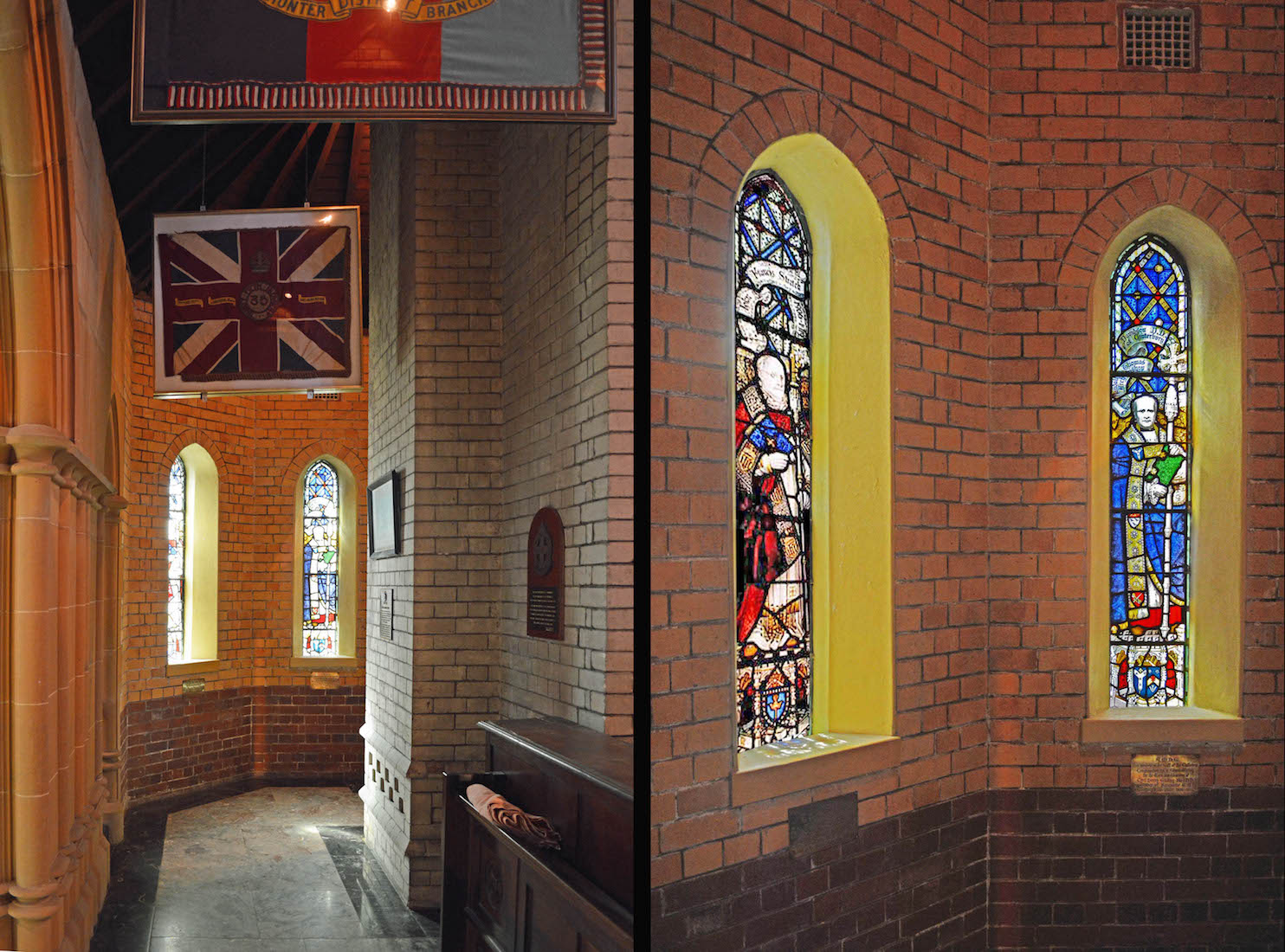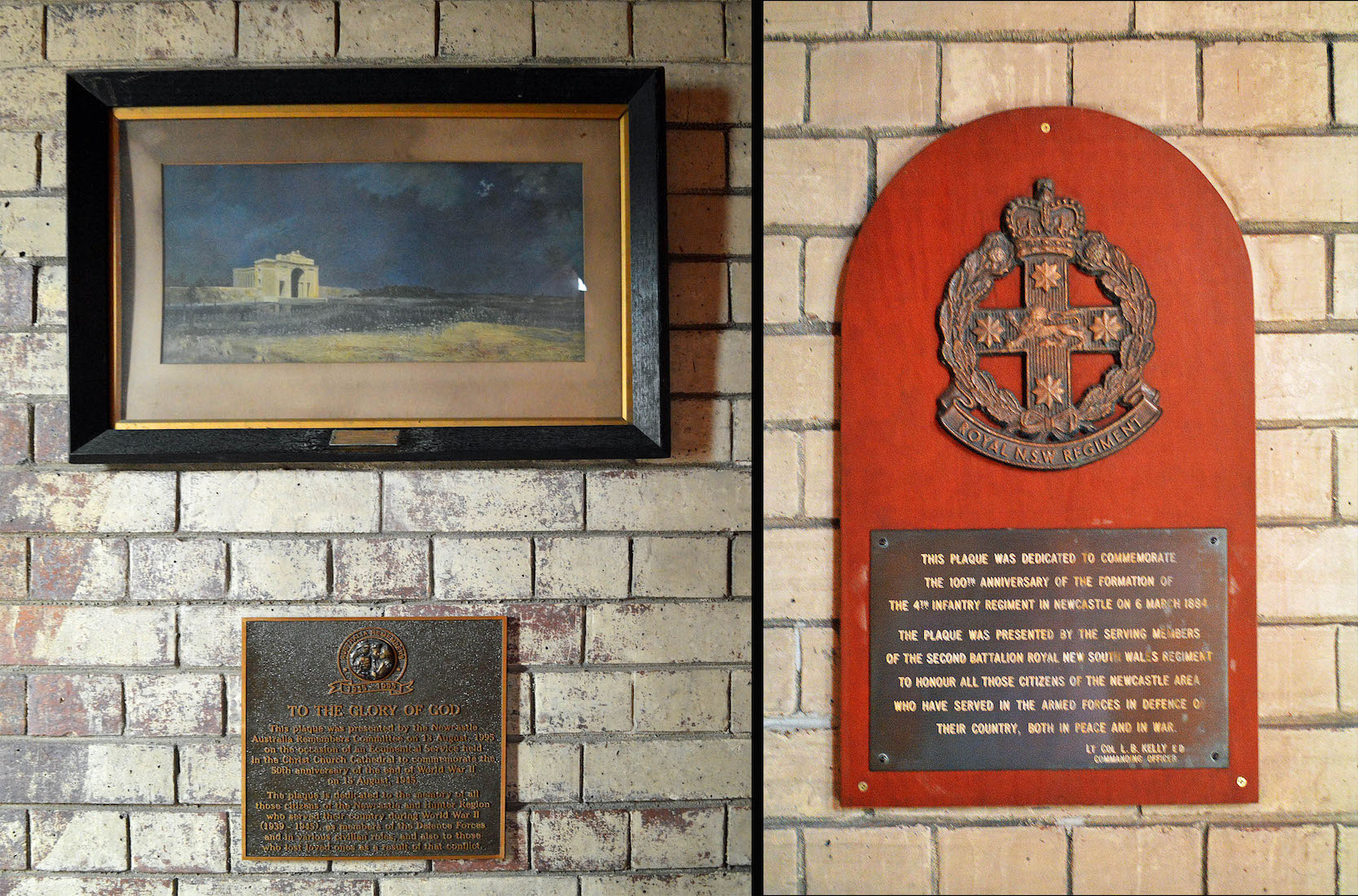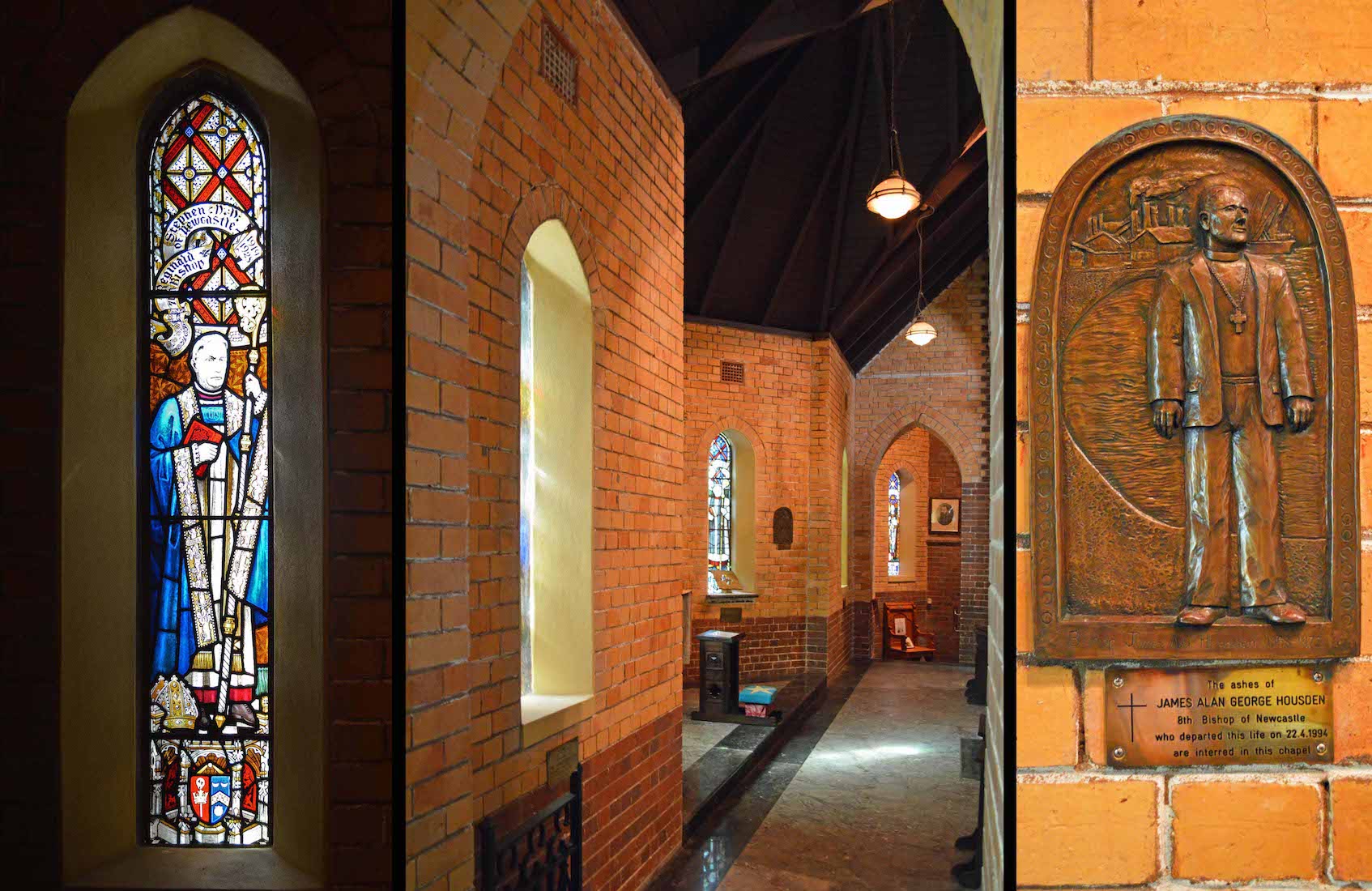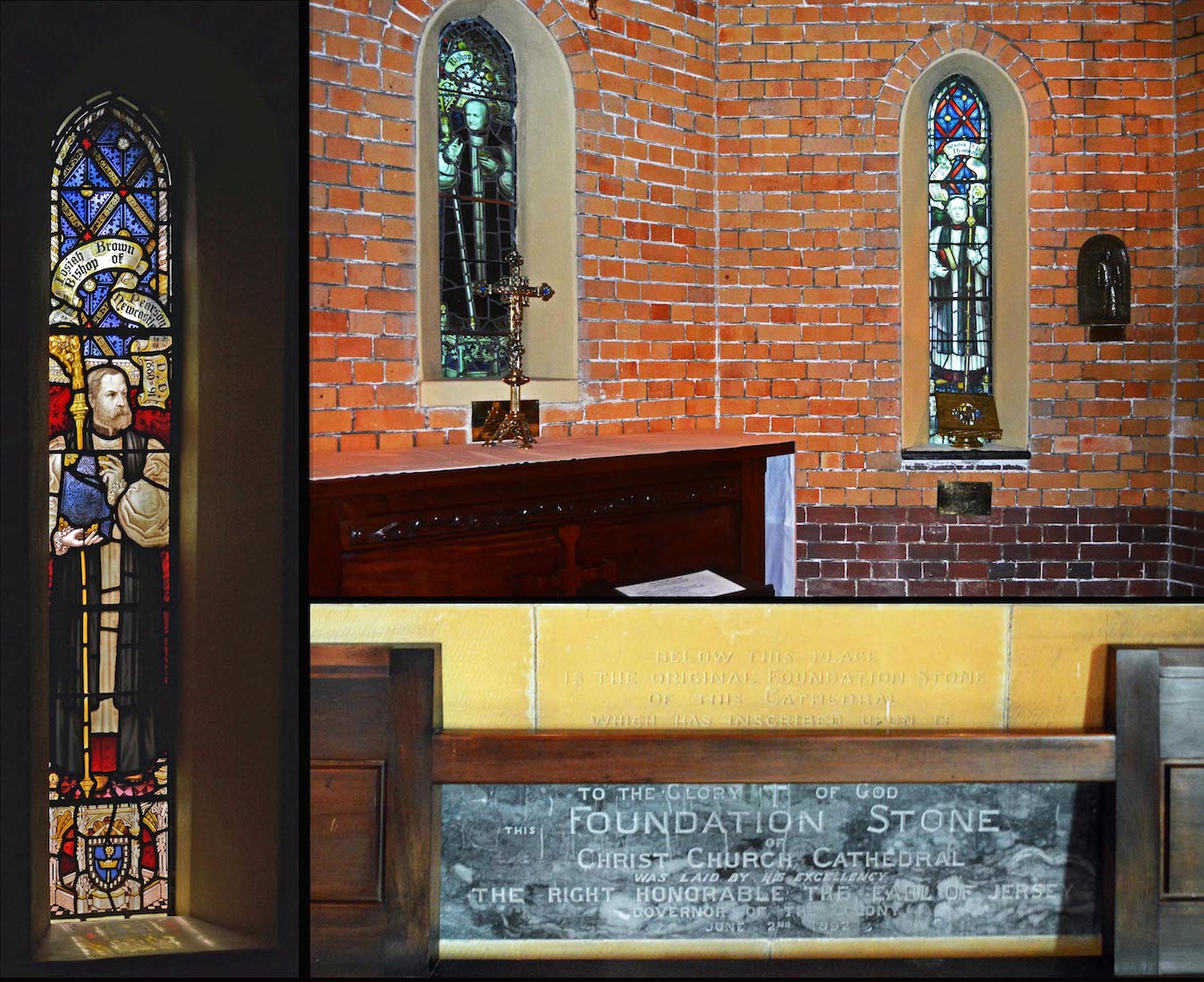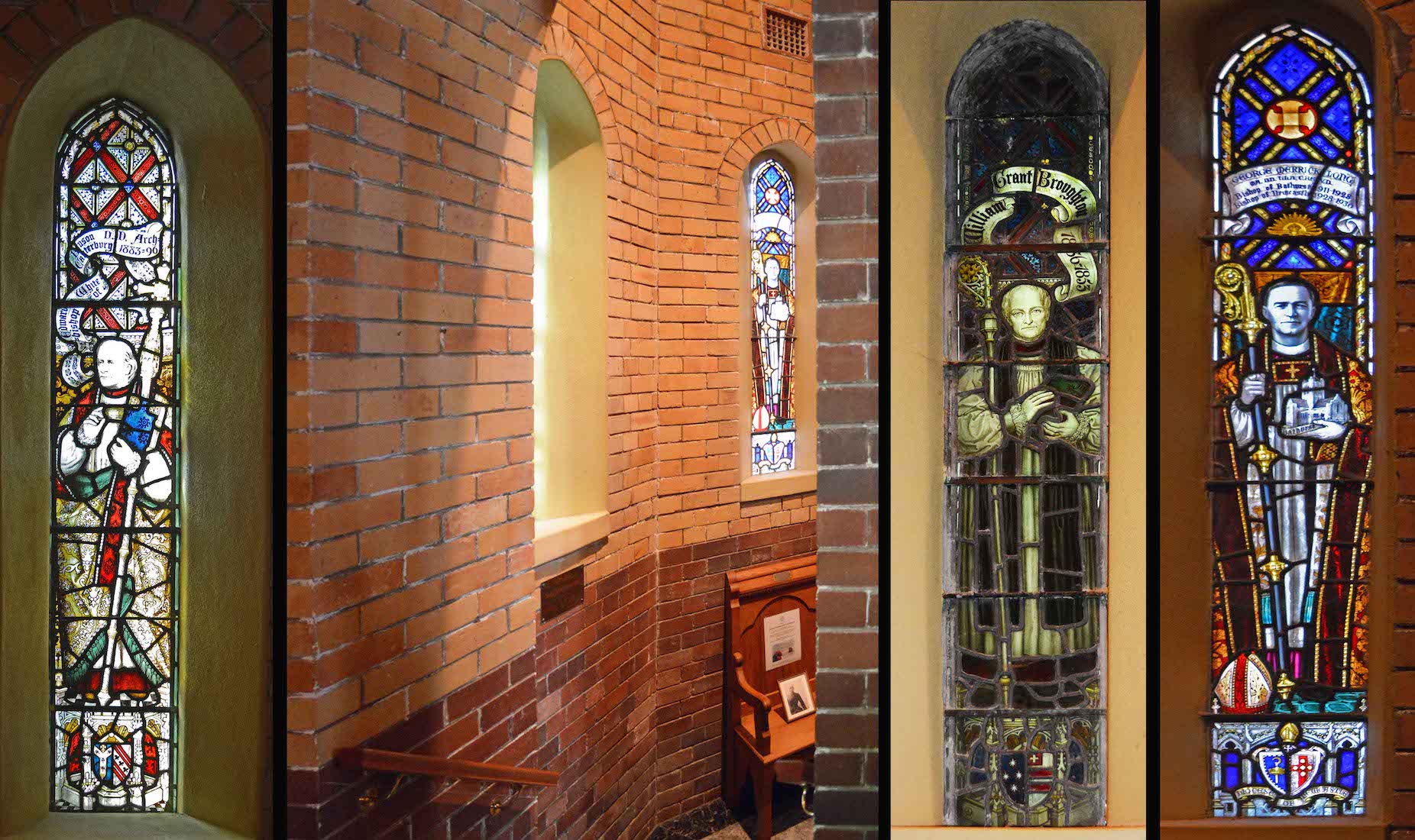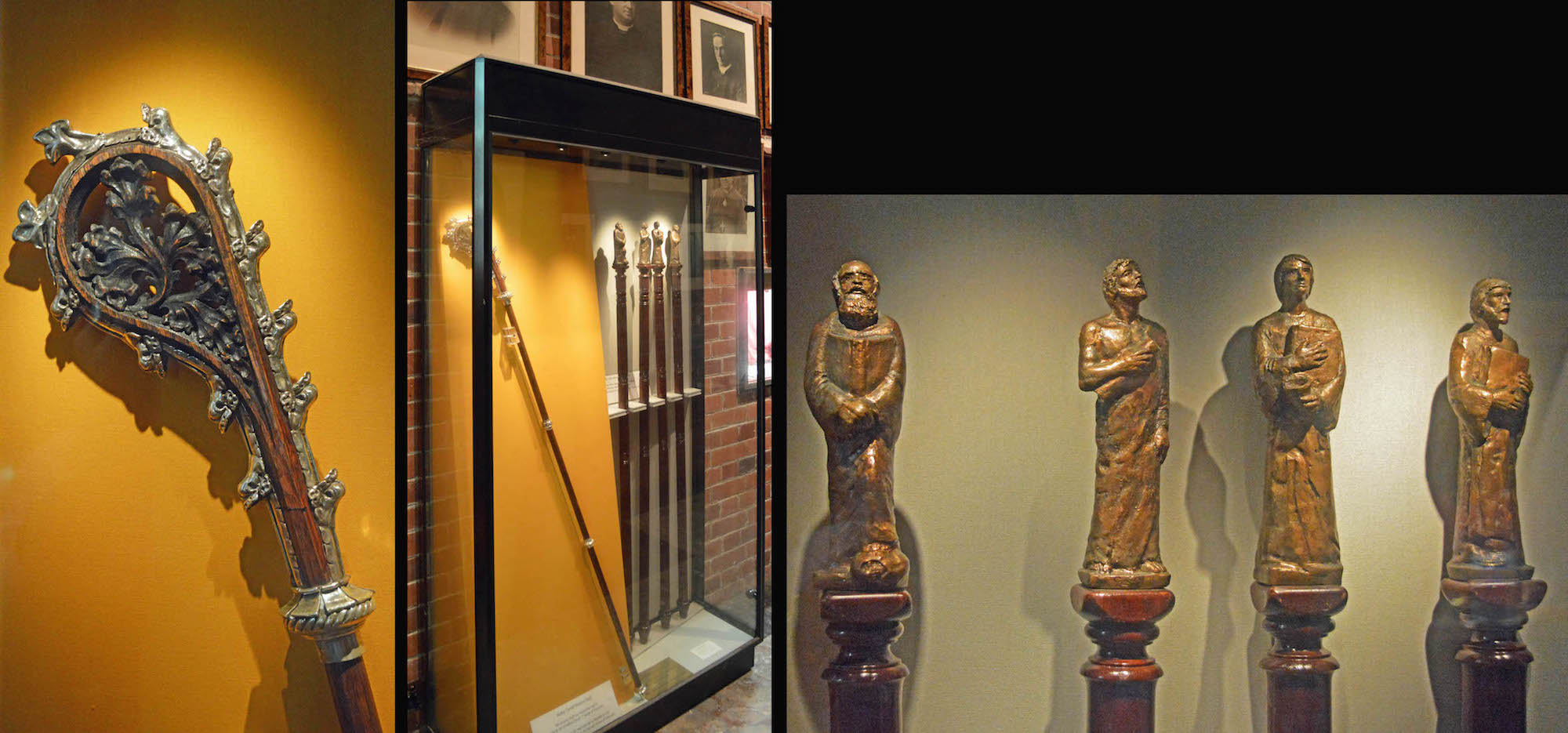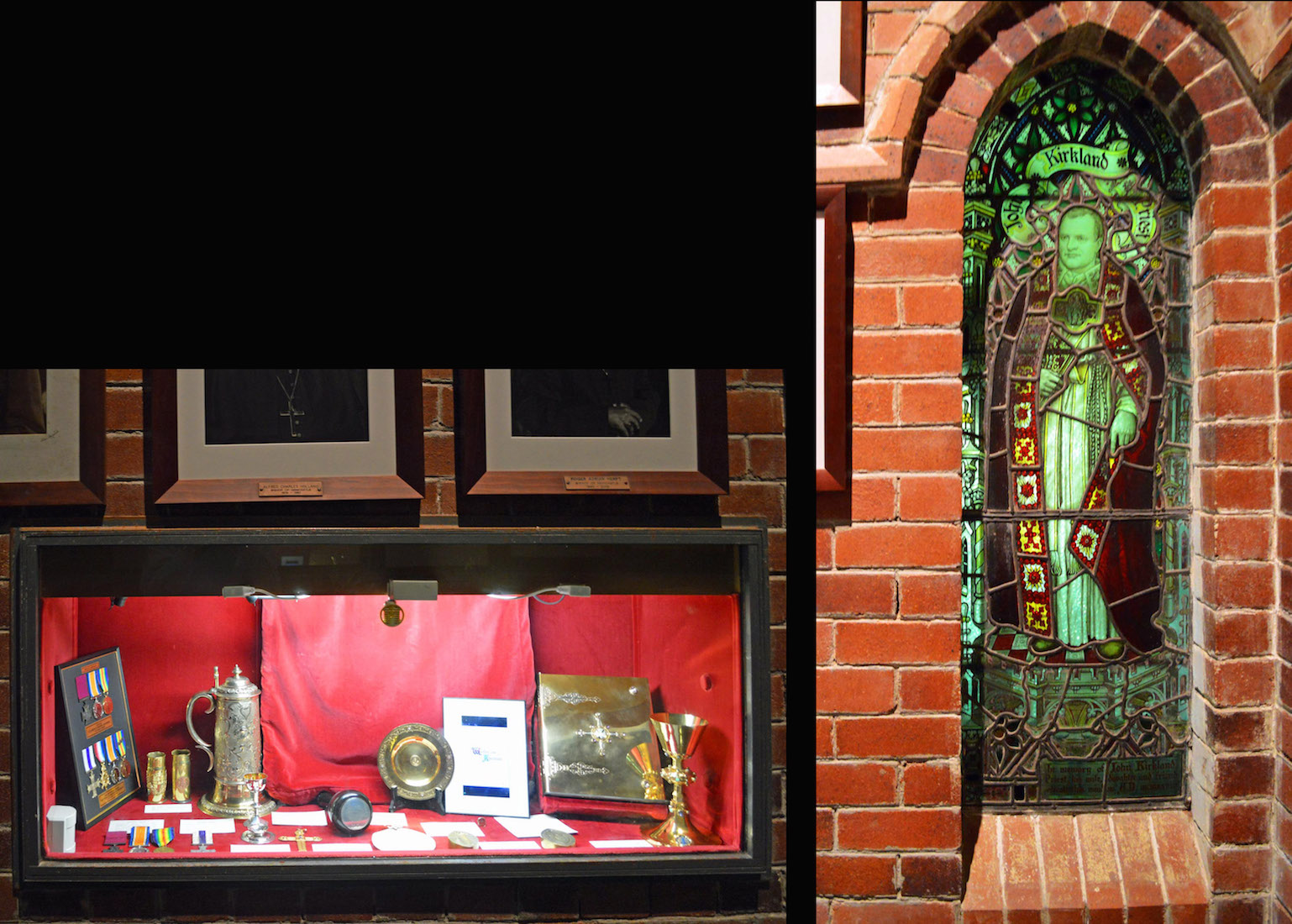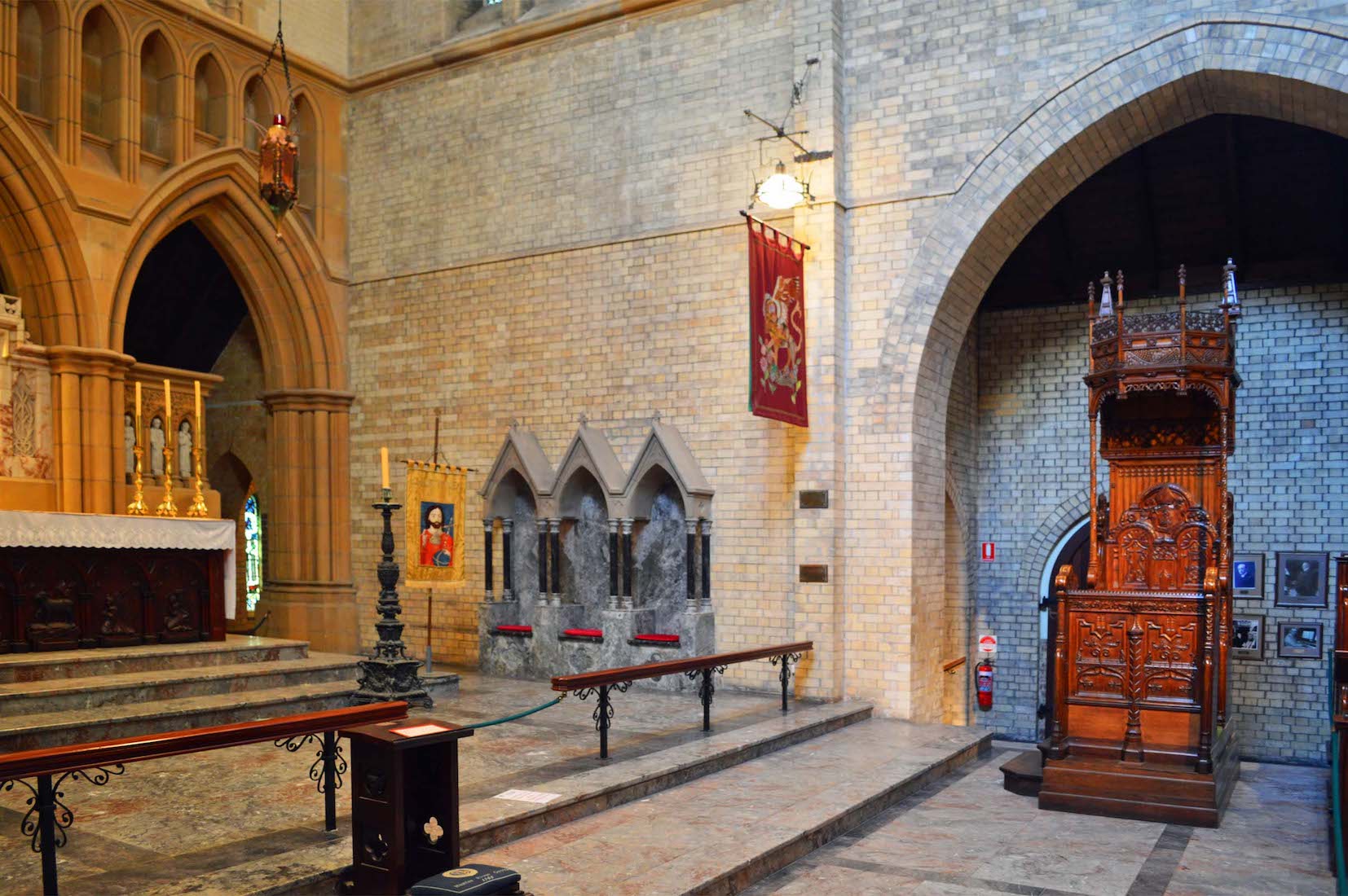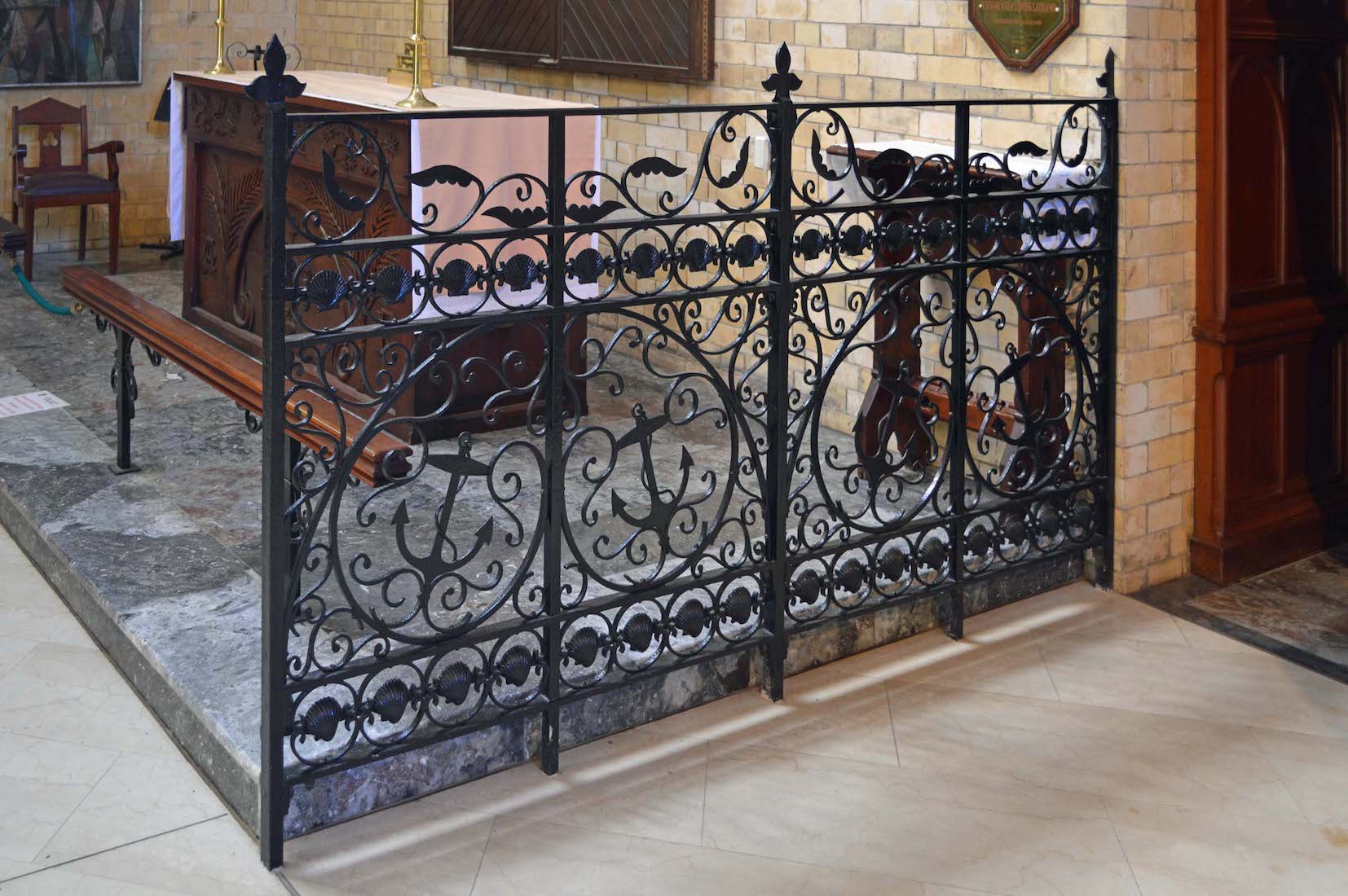
From the North transept, a passage leads Eastwards alongside the sanctuary, but separated from it. To the left of the entry is a wonderful wrought iron fence depicting anchors, and delineating the end of the St Nicholas Chapel. PLAN
20B. OCTAGONAL PLAQUES
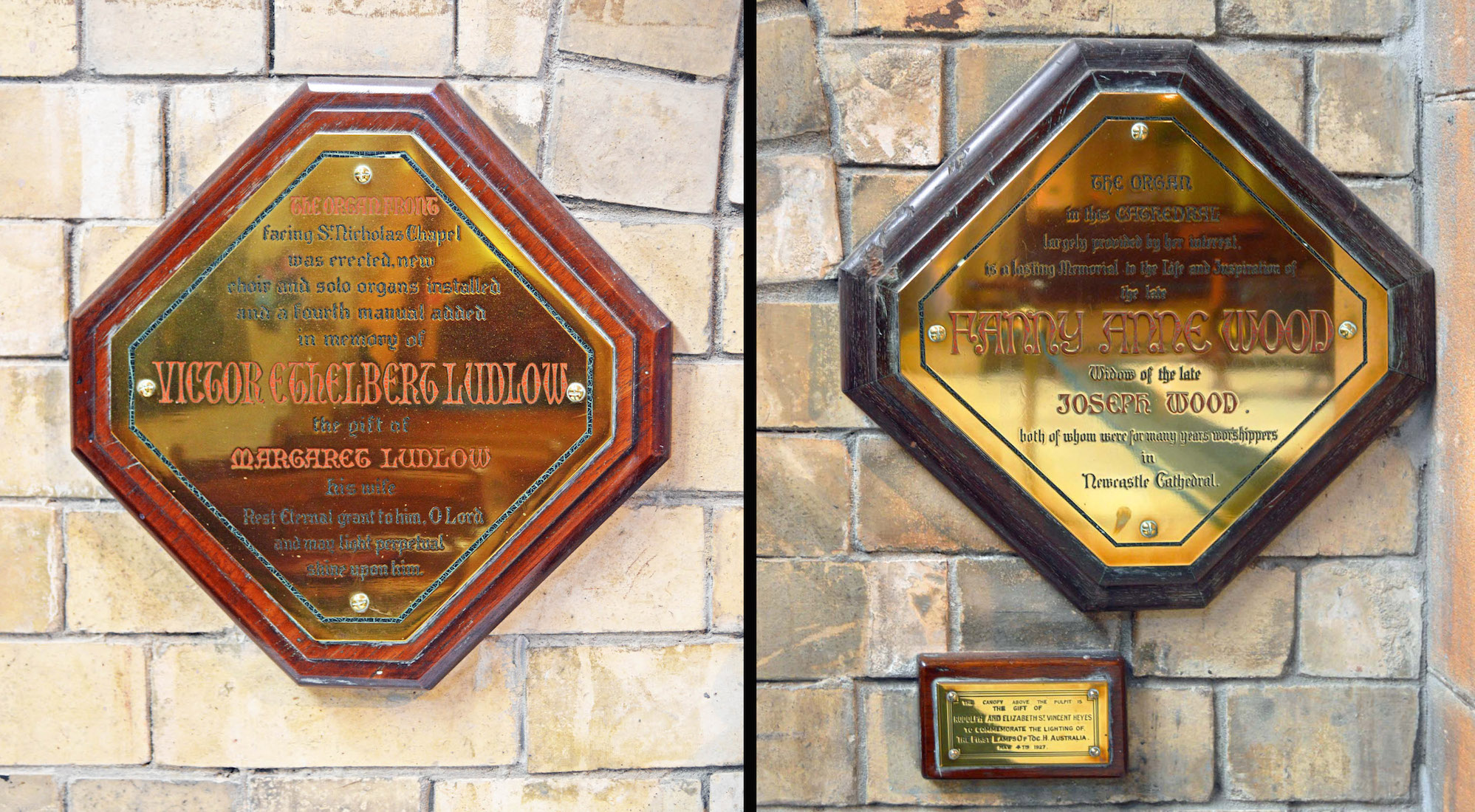
On the wall here are two octagonal plaques. The left plaque tells that the organ pipes on this wall were given in memory of Victor Ethelbert Ludlow. The right octagonal plaque tells us that the Cathedral organ was installed largely through the bequest of Fanny Anne Wood, widow of the late Joseph Wood, both of whom worshipped in this Cathedral for many years. The small plaque acknowledges the gift of the pulpit canopy.
20C. NORTH AMBULATORY
We now enter the North ambulatory. The rectangular plaque inside (by the fire hydrant) is in memory of Horace Cook and Carl A. Stacy who were presumably choristers in the Cathedral prior to 1907.
21A. ST MICHAEL’S CHAPEL
The ambulatory quickly leads us to the beautiful St Michael’s Chapel. There seems to be some ambivalence about the naming of this Chapel, as it is often referred to as The Warriors’ Chapel. The stained glass windows are striking, and just below them is the inscription from Laurence Binyon’s poem ‘For the Fallen’: ‘At the going down of the sun and in the morning, We will remember them’.
21B. CHAPEL AUMBRY, ALTAR
At the East end is an attractive marble altar and reredos, and in the wall nearby, an aumbrey. The 14 terra cotta Tinworth panels which form the reredos depict the closing events in Christ’s life and are works of great beauty.
22. CHAPEL NORTH WINDOWS
The Warriors’ Chapel was built as a memorial to the fallen of World War I. It is graced by 13 beautiful windows, all by Kempe & Co of London, and telling the story of service and sacrifice in the light of an offering to Christ. Illustrated here are the four windows on the North wall. From left we see: • David – the boy warrior, with sling in hand; • St Luke – the doctor [Photo Credit: Veronica Butcher]; • David and Jonathan – companionship; • St Joseph – representing home service.
23. CHAPEL EAST WINDOWS
The five windows above the altar tell of the struggle towards light against the forces of darkness and evil. From left we have: • St George – the Patron Saint of England (and the slayer of the dragon!); • The Prophet Micah – the scroll reads: ‘Nation shall not lift up sword against nation’ (Micah 4:3); ; • The Lord as the Good Shepherd – the inscription reads ‘Let all nations bow before him’; • St John the Evangelist – who brought the message of peace and brotherhood; • St Michael – the Warrior of Heaven.
24A. CHAPEL SOUTH WALL
In the middle of the South chapel wall is engraved: ‘Hallowed in Christ be the memory of the brave men and women who died in the Great War ... ’. The middle column contains a shrine with pierced bronze gates. In this shrine is a book containing the names of men who died in the Great War.
24B. CHAPEL SOUTH WINDOWS
The four windows on the South wall of the Chapel depict (from left): • St Martha – representing Home Service; • The Madonna and Child; • The Padre – holding the chalice of wine, with the words of Jesus: ‘Do this in remembrance of me’; • St Veronica – the Nurse. (Legend has it that St Veronica wiped the face of Jesus on His way to the Cross.) [Photo credit: Veronica Butcher]
25A. CHAPEL REAR
We turn to look at the back wall of the Chapel, noticing a bust at left, a tomb (the Forster Monument) at centre with another shrine behind, the Australian flag, and an extract from Binyon’s poem.
25B. CHAPEL MEMORIAL
The Forster Monument is a life-sized bronze of Lord Forster’s son Alfred, who died of wounds in the Great War. The support bears the words: ‘Their name liveth for evermore’. Directly behind is a bronze shrine in which the Forster Lamp of Toc H is kept. Below is the foundation stone of the Chapel, laid by Lord Forster, and above is a medallion – a piece of stone from Canterbury Cathedral.
26A. NORTH EAST AMBULATORY
Leaving the Warriors’ Chapel, we continue our exploration. The ambulatory continues straight ahead before turning right. A pair of stained glass windows adorn the corner. Small flags hang from the ceiling.
26B. PAINTING, PLAQUE
At right there is a plaque hanging on the wall, and beyond that, a framed painting of the Menin Gate at Midnight by Will Londstaff, with a commemorative plaque below. The near plaque was dedicated to commemorate the 100th Anniversary of the formation of the 4th Infantry Regiment in Newcastle in 1884.
27. EAST AMBULATORY
Rounding the corner, the ambulatory continues, separated from the sanctuary by the wall on the right. A single window is on our immediate left, depicting Reginald Stephen who was Bishop of Newcastle 1919 – 1928. A little further along there is a recess on the left – perhaps a chapel? Next to the visible window is an unusual brass plaque, shown at right. The inscription informs us that the ashes of James Alan George Housden, 8th Bishop of Newcastle (in fact from 1958 – 1972) who departed this life on 22.4.1994 are interred in this chapel.
28. TYRRELL CHAPEL
The recess turns out to be the Tyrrell Chapel. [Photo Credit: Veronica Butcher] The central window in the chapel, above the altar, portrays Bishop Tyrrell, the first Bishop of Newcastle. There are in fact seven windows along the ambulatory which depict Bishops of Newcastle or Archbishops of Canterbury; an eighth window portrays Bishop Broughton, first and only Bishop of Australia. For example, the left window of the Chapel pictured at left, shows Isaiah Brown Pearson, Bishop of Newcastle 1880 – 1891. Directly behind us, opposite the altar, is a copy of the foundation stone of the present building. The original stone is below ground and placed under glass.
29. SOUTH EAST AMBULATORY
Leaving the Tyrrell Chapel, we continue following the ambulatory to the South East corner. There are three stained glass windows to see here – one at the top of the steps (just out of sight at left in the general view), and two below. The windows portray (from left): • Edward White Benson – Archbishop of Canterbury 1883 – 1896; • William Grant Broughton – first and only Bishop of Australia of the Church of England [Photo Credit: Veronica Butcher]; • George Merrick Long – Bishop of Bathurst 1911 – 1926, and Bishop of Newcastle 1928 – 1930.
30. PASTORAL STAFFS
Rounding the corner in the ambulatory, we come to this interesting display with Bishop Tyrrell’s crozier (pastoral staff or crook), and various other rods or wands, carried in ceremonial procession. The rods are interesting because the heads are four carved figures – the Four Evangelists: Matthew, Mark, Luke and John. these were carved by local artist Krysten Walker-Cox.
31A. TREASURY
The South Ambulatory contains various items of historical interest and value – particularly this treasure case. After World War I many of the women of the region gave gold jewellery and precious stones to be made into the covers of the Book of Gold and the gold Chalice and Paten in memory of family members killed in the War. In the book are written the names of all the people from the Diocese who were killed in the conflict. The window depicts Priest John Kirkland who served as a Stanton Chaplain in Newcastle.
31B. SOUTH AMBULATORY EXIT
The wall is lined with historic photographs. Ahead is the ambulatory exit, but we turn aside here into the chancel ...
32A. SOUTH EAST SANCTUARY
We come up from the South ambulatory by the cathedra. Here we get a good view of the sanctuary, but first we examine the cathedra.


